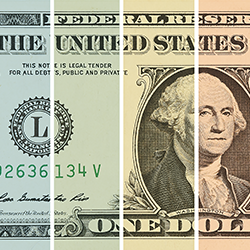|
exhibitor q&a
Help!
Small Booths

ILLUSTRATION: MARK FISHER
Q.
How can I improve my chances of getting an appreciable return from a small booth?A.
Exhibits in the 10-by-10- and 10-by-20-foot range can absolutely have a massive impact that belies their size. However, these mini marketing machines also come with some handicaps and restrictions, and you need a clear design strategy to sidestep these pitfalls. So here's a quick list of design-related dos and don'ts for your small booth. What to do ➤ Use the entire space. This may seem like obvious advice, but sometimes corners or sides of a small booth aren't effectively used in the design. Granted, you need to leave some open areas for attendee traffic and staff/visitor engagement, and you don't want to cram in so much stuff that your booth resembles the Fez Medina. But look for ways to employ otherwise unused corners for messaging or displays, and consider methods to integrate storage into your existing exhibitry to keep counters clean and your space uncluttered. ➤ Choose light colors and simple graphics. Lighter hues create the illusion of space, while darker colors tend to suggest tight quarters. Similarly, dense, complex graphics seem to fill an environment, while those with some white space and minimal text foster a feeling of openness. ➤ Employ lighting. If you want your small booth to be noticed, you need lighting – period. Simple, inexpensive fixtures are likely all that's necessary to highlight key products or messaging or simply to direct the eye to interesting aspects of your exhibit. ➤ Focus on flooring. Flooring can be an easy and inexpensive way to really set your petite stand apart, and it's particularly effective if you're surrounded by a sea of similarly sized booths. Consider interlockable rubber mats or hard tiles to further delineate your space and add a pop of interest. Just avoid custom flooring with large patterns, the latter of which can make the space seem even smaller. What not to do ➤ Be lazy. Many greenhorn exhibitors opt to just plop some banner stands, a reception desk, and maybe some literature inside their spaces and call it a day, but they might as well call it quits. This tactic might be cheap and easy, but it's far from effective. Rather, always give some serious thought to your booth design to ensure it provides visual interest, educates attendees about your offerings, and gives them a reason to stop and learn more. With some consideration and planning, even a DIY exhibit can be effective. But if you phone in the design, you're almost better off staying at home. ➤ Skimp on graphic printing. When you have a smaller booth, your graphics are literally staring attendees in the face from a few feet away. That means every flaw – be it a pixilated image or a fabrication flub – is on full display. So don't cut corners when it comes to your graphics. Since you aren't fabricating massive quantities, you can likely afford to ante up for high-quality printing, high-res imagery, and premium materials. Especially since your graphics will likely be a core component of your small-booth design, invest as much as you're able to without breaking the bank. ➤ Cram in copy. Text-heavy graphics are a common rookie mistake. Small exhibitors often think they must relay everything attendees need to know about their products or services via graphic text, when quite the opposite is true. Graphics should lure people in, and staffers or electronic media should relay the bulk of the information. Text should always be succinct and easy to read, prompting attendees to talk to staff to learn more. And while you're at it, position your text at eye level or above, or it will likely be blocked by staff or attendees. While small exhibits have some inherent limitations, it just takes a bit of planning and prioritizing to craft a successful experience. With a few carefully chosen pieces, just the right amount of text, and well-lit, high-quality graphics, your little booth is sure to create a big impression. — Kevin Fett, president, Ion Exhibits, Itasca, IL
Help Wanted Send your tough questions about exhibiting to Linda Armstrong, larmstrong@exhibitormagazine.com.
|
|
|
||||||||||||||||||||||||||||
|
|
||||||||||||||||||||||||||||
|
TOPICS Measurement & Budgeting Planning & Execution Marketing & Promotion Events & Venues Personal & Career Exhibits & Experiences International Exhibiting Resources for Rookies Research & Resources |
MAGAZINE Subscribe Today! Renew Subscription Update Address Digital Downloads Newsletters Advertise |
FIND IT Exhibit & Display Producers Products & Services All Companies Get Listed |
EXHIBITORLIVE Sessions Certification Exhibit Hall Exhibit at the Show Registration |
ETRAK Sessions Certification F.A.Q. Registration |
EDUCATION WEEK Overview Sessions Hotel Registration |
CERTIFICATION The Program Steps to Certification Faculty and Staff Enroll in CTSM Submit Quiz Answers My CTSM |
AWARDS Sizzle Awards Exhibit Design Awards Portable/Modular Awards Corporate Event Awards Centers of Excellence |
NEWS Associations/Press Awards Company News International New Products People Shows & Events Venues & Destinations EXHIBITOR News |
||||||||||||||||||||
|
||||||||||||||||||||||||||||






